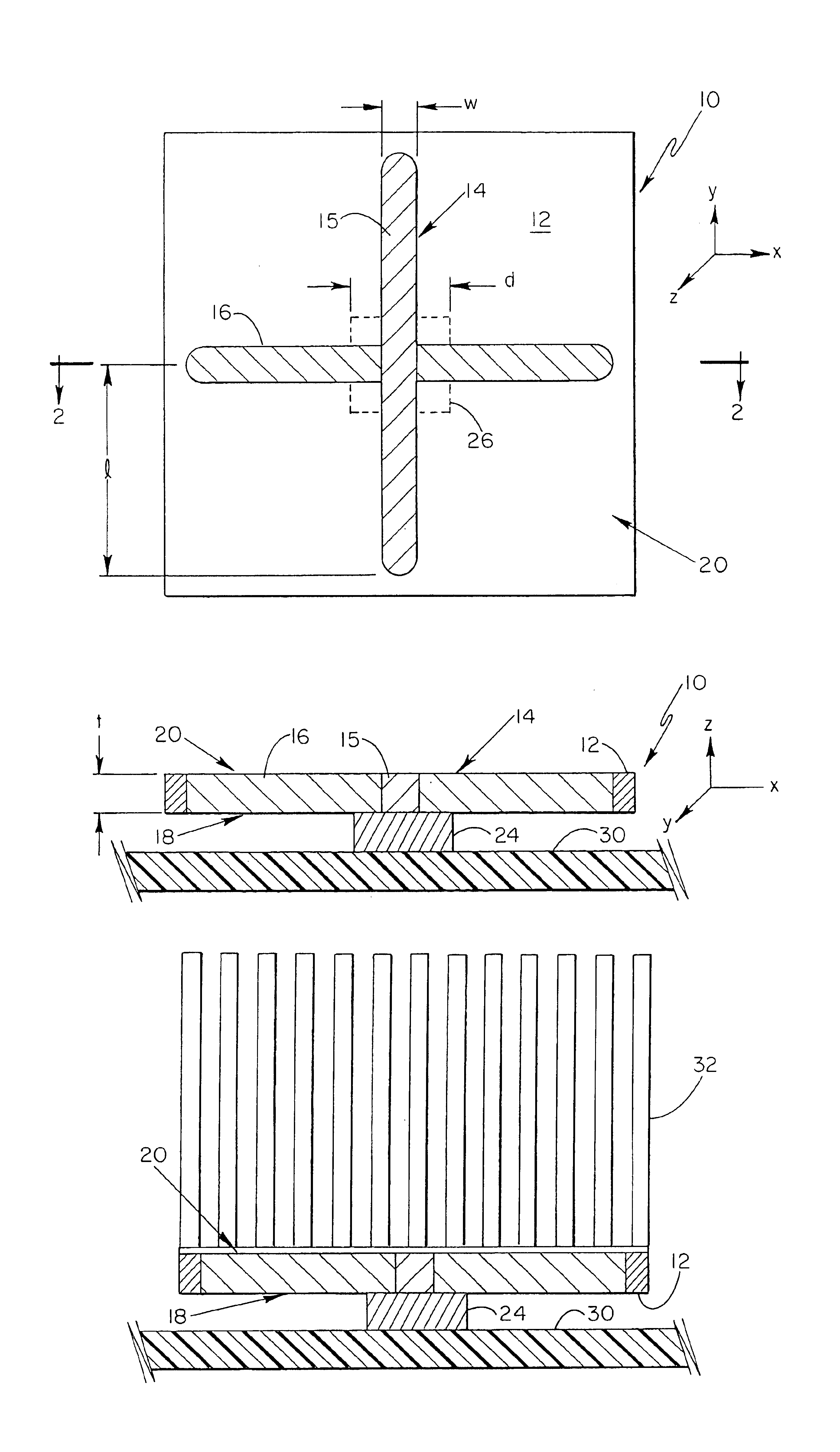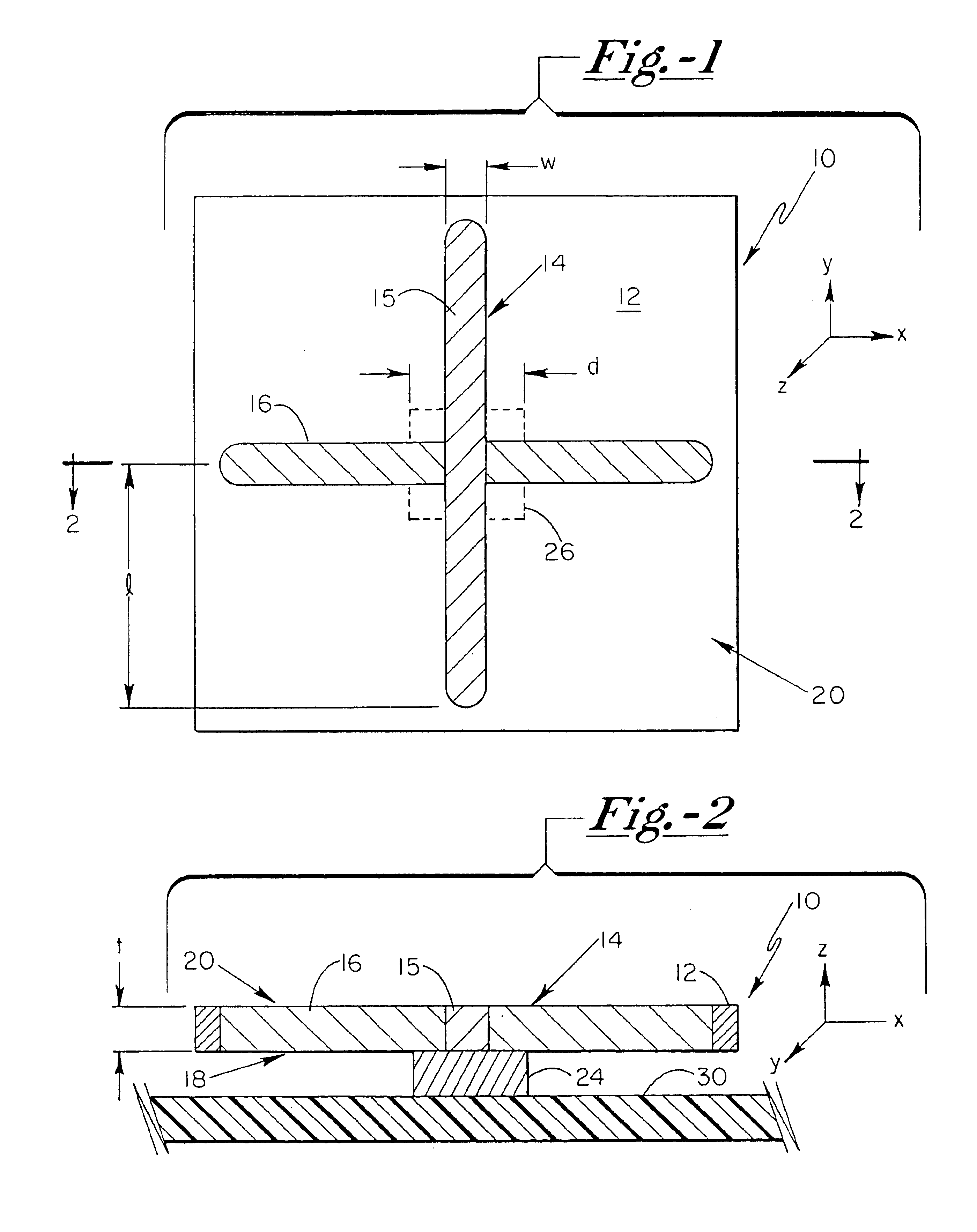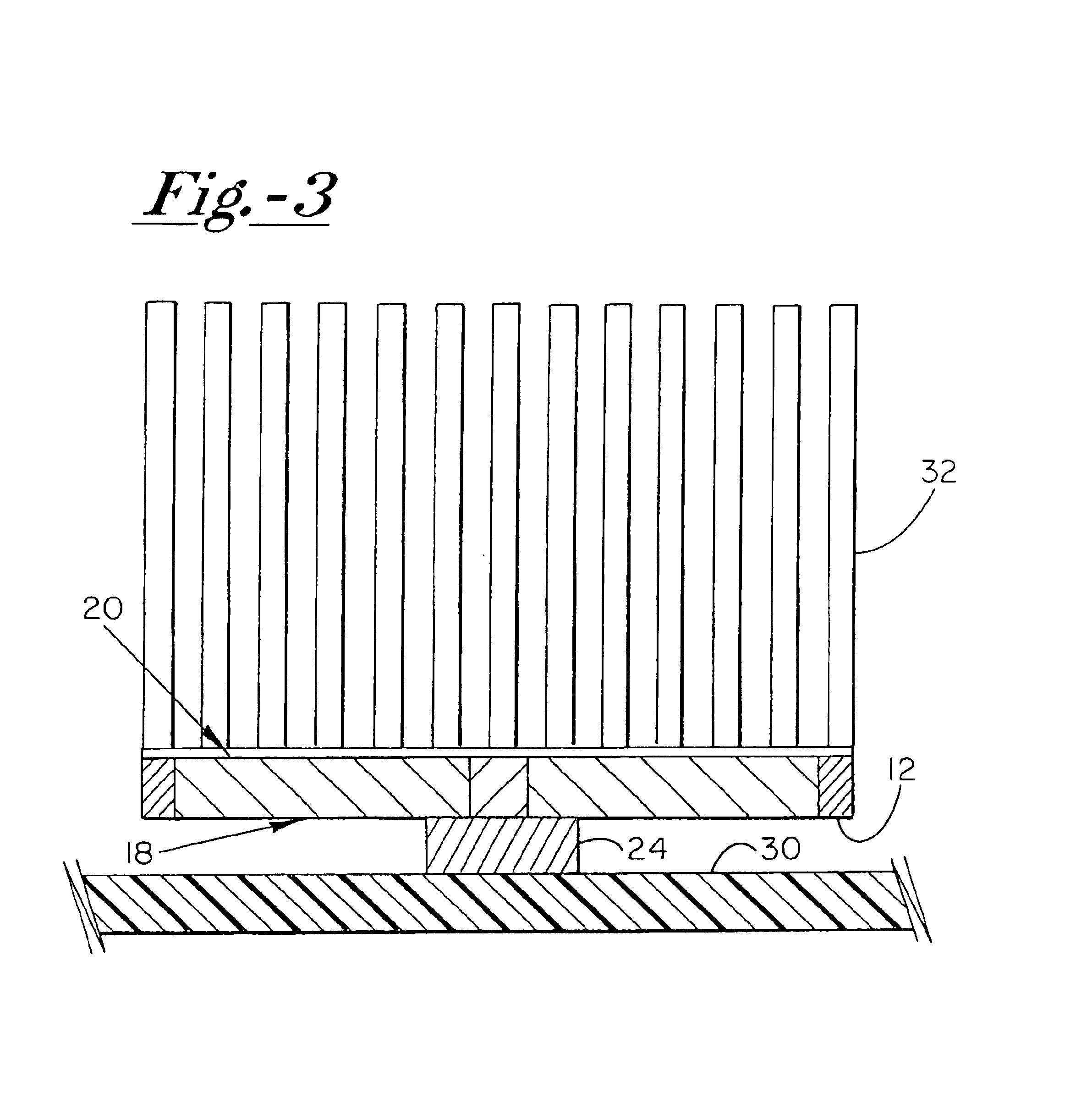Thermal diffusion apparatus
a technology of diffusion apparatus and heat dissipation chamber, which is applied in the direction of cooling/ventilation/heating modification, semiconductor/solid-state device details, semiconductor devices, etc., can solve the problems of reducing the efficiency and performance of electronic components in an elevated temperature environment, effectively removing relatively high levels of thermal energy away from a relatively small area, and limited thermal energy of conventional heat sink devices. achieve the effect of improving heat dissipation efficiency, reducing heat loss, and increasing heat loss
- Summary
- Abstract
- Description
- Claims
- Application Information
AI Technical Summary
Benefits of technology
Problems solved by technology
Method used
Image
Examples
example i
[0036]To form the thermal diffusion apparatus, a 1.5″×1.5″×0.08″ copper substrate and 1″×0.08″×0.08″ highly oriented pyrolytic graphite insert portions were obtained. Appropriately-sized slots were milled in the copper substrate, such that two pyrolytic graphite inserts were positioned and secured in the resultant opening within the copper substrate with Bergquist Sterling 7500™ thermally conductive grease acting as the interface between the inserts and the copper substrate. The inserts were positioned in a substantially perpendicular “cross” orientation, with the respective mid-points of the insert portions substantially intersecting with one another. The insert portions were oriented in the copper substrate such that a highly thermally conductive direction characteristic of the insert portions were oriented in a plane perpendicular to a plane of the substrate.
[0037]A Motorola IRF-840, TO-220 package, acting as the heat source, was operated at 60 watts and coupled to the thermal di...
example ii
[0041]Thermal diffusion structures with integrated finned heat sink configurations were provided. The heat sink devices were fabricated from aluminum and were 2.4″×3.2″×0.75″ in size, with one of the heat sink devices having highly oriented pyrolytic graphite insert portions in an upper side thereof. The heat sink device incorporating insert portions included two such portions, each of which were 1″×0.12″×0.08″ in dimension, the two insert portions being positioned along the upper surface of the heat sink in a substantially perpendicular “cross” pattern, with the mid-points of each of the insert portions substantially intersecting with one another. To assist in removing heat from the heat sink devices, a 9.18 CFM maximum air flow fan was operated at 4500 rpm to direct such air flow across the fins of the heat sink elements.
[0042]TO-220 packages were secured to respective upper surfaces of the heat sink structures via Bergquist Sterling 7500™ grease. The TO-220 package was placed on ...
PUM
 Login to View More
Login to View More Abstract
Description
Claims
Application Information
 Login to View More
Login to View More - R&D
- Intellectual Property
- Life Sciences
- Materials
- Tech Scout
- Unparalleled Data Quality
- Higher Quality Content
- 60% Fewer Hallucinations
Browse by: Latest US Patents, China's latest patents, Technical Efficacy Thesaurus, Application Domain, Technology Topic, Popular Technical Reports.
© 2025 PatSnap. All rights reserved.Legal|Privacy policy|Modern Slavery Act Transparency Statement|Sitemap|About US| Contact US: help@patsnap.com



